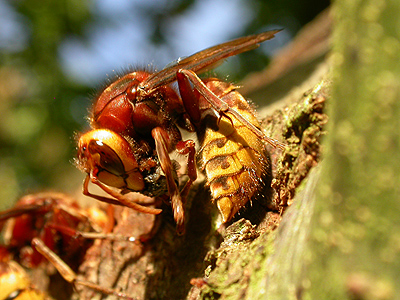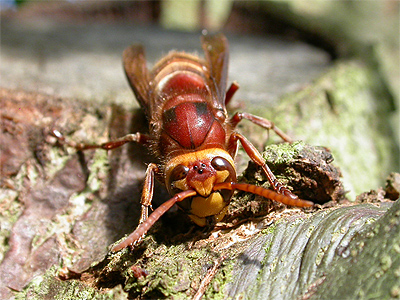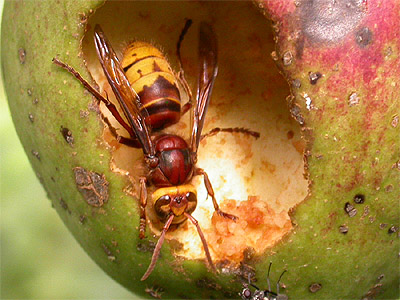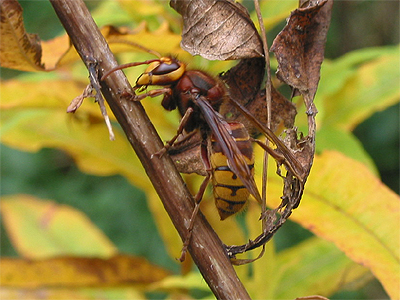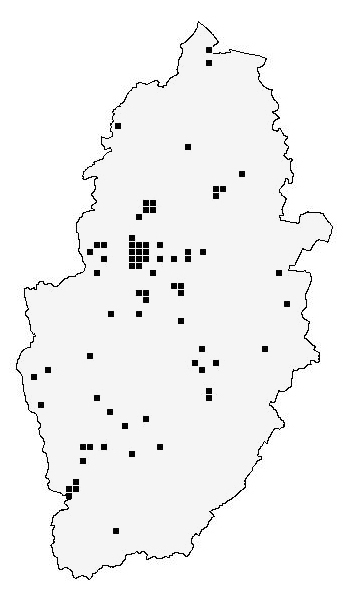| Wasps are
social insects and well known to everyone. Colonies build
up during the Summer and can eventually total several
thousand by the time the colony dies at the onset of cold
weather. Only the young queens survive the Winter,
hibernating in sheds and hollow trees etc, to start new
colonies in the Spring. By any standards, the Hornet is
one of our most impressive and imposing insects. Workers
have a length of nearly 3.5cm, which means it is by far
the largest species of wasp found in the UK. It is also
quite uncommon, but has increased it's range during
recent years following a succession of mild Winters. The
south-east UK is still perhaps it's real stronghold, but
it can now be encountered just about anywhere in
Nottinghamshire, although the Dukeries and Sherwood
Forest area is perhaps the most likely place to see it.
Nests are usually found within dead or decaying trees. |


